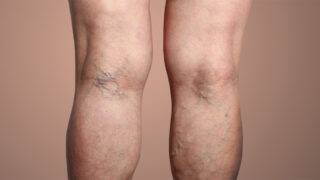As people age, knee issues often arise as a result of wear and tear. Here, orthopaedic surgeon DR HAMID RAZAK talks about the knee preservation techniques he uses to help people avoid knee injury maintain healthy knees for longer.
What are the common types of knee injury you tend to treat in patients as they age?
The main culprits are osteoarthritis, meniscus tears and ligament injuries. Symptoms typically involve joint pain, stiffness, swelling and reduced mobility. Many patients experience increased discomfort after activity or prolonged periods of inactivity.

Are there any lifestyle habits that help to prevent knee injury over the long term?
Absolutely, lifestyle habits play a crucial role in maintaining knee health. Regular low-impact exercises like stationary cycling, using an elliptical machine and swimming can keep the joints flexible and strengthen the surrounding muscles. Weight management is particularly important, as excess weight puts additional stress on the knees, accelerating wear and tear. Maintaining a healthy weight can significantly reduce the risk of knee problems.
Tell us about knee preservation and how it differs from traditional knee treatments.
Knee preservation focuses on maintaining and improving the existing knee structure and function, often through non-surgical methods and minimally invasive procedures. This approach contrasts with traditional treatments that might involve partial or total knee replacement. Preservation aims to delay or even prevent the need for surgery by addressing issues early if possible and maintaining as much natural knee function as possible.
I call this an approach to “extend the COE of our knee”! Don’t get me wrong – knee replacements are great when done at the right time for the right patient. However, if it’s not the right time (too early) or you’re not the right patient (high demand), then knee preservation may offer you a very viable alternative.
What non-surgical methods are most effective in preserving knee health and preventing knee injury?
Effective non-surgical methods include physiotherapy, which strengthens the muscles around the knee and improves joint stability. Additionally, lifestyle changes like regular exercise and proper nutrition can support joint health. Using knee braces or orthotics can also provide additional support and alleviate pressure on the knee joint.
What types of exercises are best for strengthening the muscles around the knee?
Exercises that target the hip abductors, quadriceps, hamstrings and calf muscles are particularly beneficial. These include side-lying leg abduction, leg raises, hamstring curls and calf raises. Low-impact activities like stationary cycling, using an elliptical machine and swimming can also strengthen the muscles without putting excessive strain on the knee joint.
When is surgery required for knee preservation, and what advancements have been made in these procedures?
Surgery may be considered when conservative methods are no longer effective, and symptoms significantly impact a patient’s quality of life. As an orthopaedic surgeon, I treat the knee as an organ with four elements that need to be considered. I often describe this as the knee preservation hierarchy to my patients. The four elements from the base of the pyramid to the peak are: alignment, stability, shock absorption and cartilage. Therefore, knee preservation surgery addresses and optimises one or all of these elements. Recent advances include patient-specific minimally invasive osteotomy where we are able to 3D-print surgical guides customised to the patient’s anatomy to aid in performing highly precise alignment correction.
About the doctor
Dr Hamid Razak is a consultant orthopaedic surgeon with over 15 years’ experience. His specialties include joint preservation, sports injury and knee injury surgery, particularly knee preservation procedures.
Total Orthopaedic Care & Surgery
#09-24 Novena Medical Centre, Square 2, 10 Sinaran Drive
6371 0640 | enquiry@totalorthopaedic.com.sg
totalorthopaedic.com.sg
This article first appeared in the October 2024 edition of Expat Living. You can purchase the latest issue or subscribe so you never miss a copy!
To make the most of living in Singapore, read our latest City Guide here for free!






